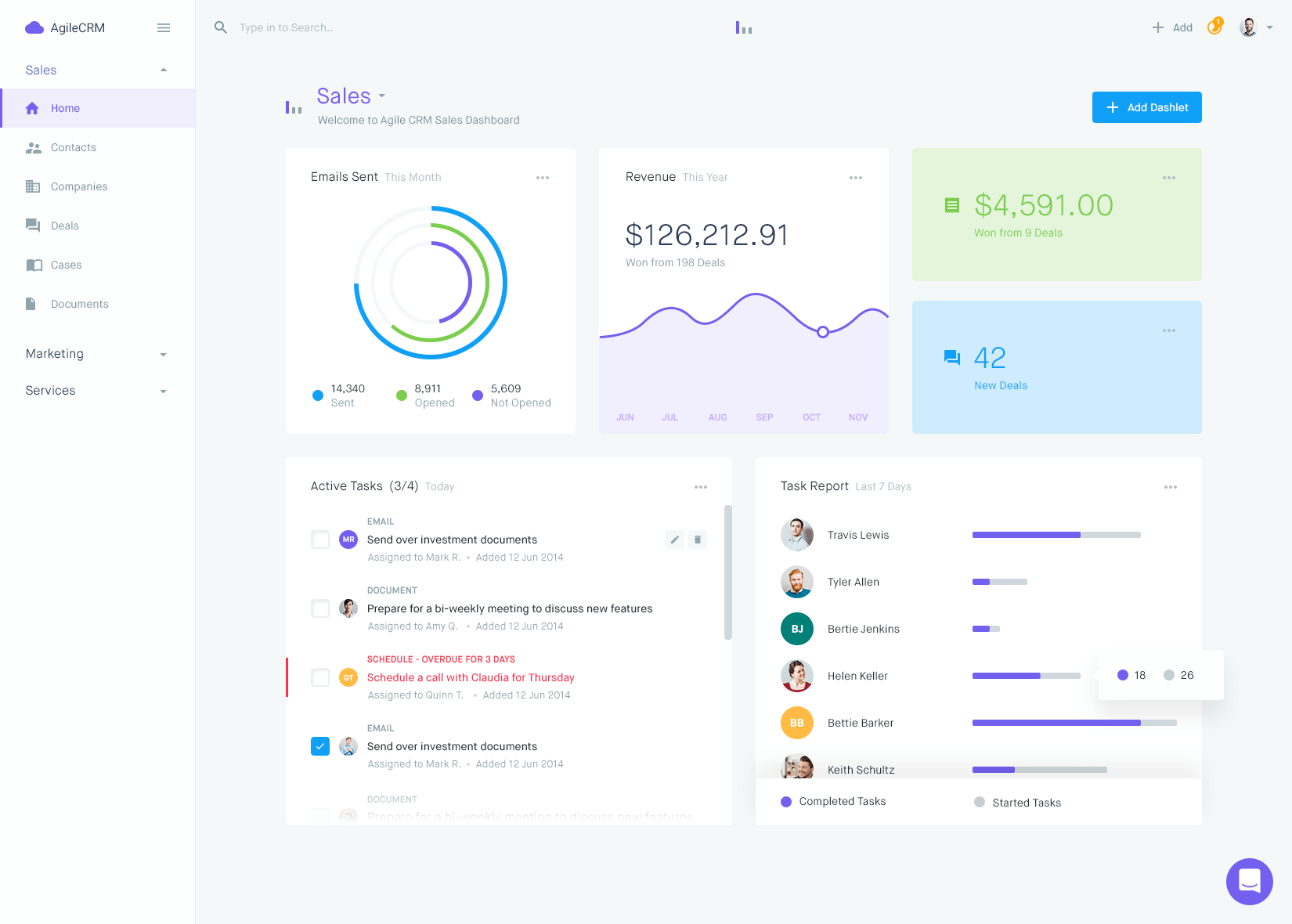
The Power of CRM Marketing ROI: Why It Matters
In the bustling world of business, where competition is fierce and customer loyalty is a prized possession, understanding and optimizing your Customer Relationship Management (CRM) Marketing ROI is no longer just an option—it’s a necessity. It’s the compass guiding your marketing ship, helping you navigate the turbulent waters of the market with precision and purpose. But what exactly is CRM marketing ROI, and why should you care?
CRM marketing ROI, in its simplest form, is the measure of the return you get on the investments you make in your CRM marketing efforts. This includes everything from the cost of your CRM software and implementation to the salaries of your marketing team, the expenses of your email campaigns, and the budgets allocated for social media advertising. It’s a holistic view, a financial scorecard that tells you whether your marketing strategies are generating a profit, breaking even, or, unfortunately, costing you money.
Understanding your CRM marketing ROI is crucial for several reasons:
- Resource Allocation: It helps you allocate your marketing budget effectively. By knowing which campaigns and strategies are yielding the best returns, you can invest more in those areas and scale back on underperforming initiatives.
- Performance Measurement: It provides a clear benchmark for evaluating the success of your marketing campaigns. You can track your progress over time and make data-driven decisions to improve your results.
- Strategic Alignment: It aligns your marketing efforts with your overall business goals. By focusing on ROI, you ensure that your marketing activities are contributing to revenue growth and profitability.
- Competitive Advantage: Businesses with a strong understanding of their CRM marketing ROI are better positioned to make informed decisions, adapt to market changes, and outmaneuver their competitors.
In essence, CRM marketing ROI is the key to unlocking sustainable growth and maximizing the value of your marketing investments. It’s about making informed decisions, optimizing your strategies, and ultimately, driving profitability.
Calculating Your CRM Marketing ROI: A Step-by-Step Guide
Calculating your CRM marketing ROI isn’t rocket science, but it does require a systematic approach. Here’s a step-by-step guide to help you get started:
- Define Your Objectives: Before you start crunching numbers, clearly define your marketing objectives. What are you trying to achieve? Is it to increase sales, generate leads, improve customer retention, or something else? Your objectives will influence the metrics you track and the calculations you perform.
- Track Your Costs: Identify and track all the costs associated with your CRM marketing efforts. This includes:
- CRM software subscription fees
- Implementation and setup costs
- Salaries of your marketing team
- Expenses for email marketing platforms
- Social media advertising budgets
- Content creation costs
- Any other marketing-related expenses
- Measure Your Revenue: Determine the revenue generated directly from your CRM marketing activities. This can be challenging, but it’s crucial for calculating ROI. Consider these methods:
- Attribution Modeling: Use attribution models to assign credit to specific marketing touchpoints (e.g., email, social media) that lead to a sale.
- Unique Promo Codes: Create unique promo codes for different campaigns to track sales directly attributable to those campaigns.
- CRM Data Analysis: Analyze your CRM data to identify customers who have interacted with your marketing campaigns and track their purchase history.
- Calculate Your ROI: Once you have your costs and revenue, you can calculate your ROI using the following formula:
ROI = ((Revenue - Cost) / Cost) * 100For example, if your CRM marketing efforts generated $100,000 in revenue and cost $20,000, your ROI would be:
((100,000 - 20,000) / 20,000) * 100 = 400% - Analyze and Optimize: After calculating your ROI, analyze the results. Which campaigns performed well? Which ones didn’t? Use this information to optimize your strategies and improve your ROI.
Remember, calculating your CRM marketing ROI is an ongoing process. Regularly track your results, analyze your data, and make adjustments to your strategies to maximize your returns.
Key Metrics to Monitor for CRM Marketing ROI
While the basic ROI formula provides a high-level view, there are several key metrics you should monitor to gain a deeper understanding of your CRM marketing performance. These metrics provide valuable insights into the effectiveness of your campaigns and help you identify areas for improvement.
- Customer Acquisition Cost (CAC): This metric measures the cost of acquiring a new customer. It’s calculated by dividing the total marketing and sales expenses by the number of new customers acquired. A lower CAC indicates a more efficient marketing strategy.
- Customer Lifetime Value (CLTV): This metric estimates the total revenue a customer will generate throughout their relationship with your business. CLTV is a crucial indicator of long-term profitability.
- Conversion Rate: This metric measures the percentage of leads who convert into customers. A higher conversion rate indicates that your marketing efforts are effectively driving sales.
- Click-Through Rate (CTR): This metric measures the percentage of people who click on a link in your email campaigns, social media posts, or other marketing materials. A higher CTR indicates that your content is engaging and relevant to your audience.
- Open Rate: This metric measures the percentage of people who open your email campaigns. A higher open rate indicates that your subject lines are compelling and that your audience is interested in your content.
- Cost Per Lead (CPL): This metric measures the cost of generating a lead. It’s calculated by dividing the total marketing expenses by the number of leads generated. A lower CPL indicates a more cost-effective lead generation strategy.
- Churn Rate: This metric measures the percentage of customers who stop doing business with your company over a specific period. A lower churn rate indicates that your customer retention efforts are successful.
By tracking these metrics, you can gain a comprehensive understanding of your CRM marketing performance and make data-driven decisions to optimize your strategies.
Strategies to Boost Your CRM Marketing ROI
Now that you understand the importance of CRM marketing ROI and how to calculate it, let’s explore some strategies to boost your returns:
- Data Segmentation: Segment your customer data based on demographics, behavior, purchase history, and other relevant factors. This allows you to personalize your marketing messages and target specific customer groups with relevant offers.
- Personalization: Personalize your email campaigns, website content, and other marketing materials to create a more engaging and relevant experience for your customers. Use their names, refer to their past purchases, and offer tailored recommendations.
- Automation: Automate your marketing processes, such as email campaigns, social media posting, and lead nurturing. Automation saves time and resources while ensuring consistent communication with your audience.
- Lead Scoring: Implement lead scoring to prioritize your sales efforts. Assign scores to leads based on their engagement and likelihood to convert. This allows your sales team to focus on the most promising leads.
- A/B Testing: Conduct A/B tests to optimize your marketing campaigns. Test different subject lines, email content, calls to action, and landing pages to see what resonates best with your audience.
- Customer Journey Mapping: Map your customer journey to understand how customers interact with your brand at each stage of the sales funnel. This helps you identify areas for improvement and optimize your marketing efforts accordingly.
- Mobile Optimization: Ensure that your website, email campaigns, and other marketing materials are optimized for mobile devices. With the increasing use of mobile devices, it’s crucial to provide a seamless experience for your mobile users.
- Integrate CRM with Other Tools: Integrate your CRM with other marketing tools, such as email marketing platforms, social media management tools, and analytics platforms. This allows you to streamline your marketing efforts and gain a more holistic view of your performance.
- Regularly Review and Refine: Constantly review your CRM marketing strategies and make adjustments based on your results. The marketing landscape is constantly evolving, so it’s essential to stay agile and adapt your strategies as needed.
By implementing these strategies, you can significantly improve your CRM marketing ROI and drive sustainable growth for your business.
Leveraging CRM Data for Better ROI
Your CRM system is a treasure trove of valuable data. When utilized effectively, this data can be the key to unlocking significant improvements in your CRM marketing ROI. Here’s how to leverage your CRM data to its fullest potential:
- Understand Your Customers: Your CRM holds a wealth of information about your customers, including their demographics, purchase history, preferences, and interactions with your brand. Use this data to gain a deep understanding of your customers and their needs.
- Identify High-Value Customers: Analyze your CRM data to identify your high-value customers. These are the customers who generate the most revenue and contribute the most to your bottom line. Focus your marketing efforts on retaining and nurturing these customers.
- Personalize Your Marketing Messages: Use your CRM data to personalize your marketing messages. Tailor your content, offers, and recommendations to each customer’s individual preferences and needs.
- Improve Customer Segmentation: Use your CRM data to segment your customers based on various criteria, such as demographics, behavior, and purchase history. This allows you to target specific customer groups with relevant offers and messages.
- Track Customer Interactions: Track all customer interactions, including emails, phone calls, website visits, and social media interactions. This provides a complete picture of your customers’ engagement with your brand.
- Analyze Customer Behavior: Analyze customer behavior to identify patterns and trends. This helps you understand how customers interact with your brand and what drives their purchasing decisions.
- Predict Customer Needs: Use your CRM data to predict customer needs and anticipate their future purchases. This allows you to offer proactive recommendations and provide exceptional customer service.
- Measure Marketing Effectiveness: Use your CRM data to measure the effectiveness of your marketing campaigns. Track metrics such as conversion rates, click-through rates, and ROI to assess your performance and identify areas for improvement.
- Optimize Sales Processes: Use your CRM data to optimize your sales processes. Identify bottlenecks in your sales funnel and streamline your sales activities to improve efficiency and increase conversions.
By effectively leveraging your CRM data, you can gain a deeper understanding of your customers, personalize your marketing efforts, and drive significant improvements in your CRM marketing ROI.
CRM Marketing ROI: Common Challenges and Solutions
While the potential benefits of CRM marketing ROI are significant, businesses often face challenges in achieving optimal results. Here are some common challenges and practical solutions:
- Poor Data Quality: Inaccurate, incomplete, or outdated data can hinder your ability to make informed decisions and personalize your marketing efforts.
- Lack of Integration: Siloed systems and a lack of integration between your CRM and other marketing tools can limit your ability to track and analyze your performance.
- Insufficient Training: Without proper training, your team may not be able to effectively use your CRM system or implement best practices for CRM marketing.
- Lack of Alignment: Misalignment between your sales and marketing teams can lead to inefficiencies and missed opportunities.
- Ignoring Customer Feedback: Failing to listen to customer feedback can lead to missed opportunities for improvement and a decline in customer satisfaction.
- Not Tracking the Right Metrics: Tracking the wrong metrics can lead to a misinterpretation of your performance and wasted resources.
- Lack of Personalization: Failing to personalize your marketing messages can lead to decreased engagement and lower conversion rates.
- Not A/B Testing: Not conducting A/B tests to optimize your marketing campaigns can prevent you from maximizing your results.
Solution: Implement data quality checks, regularly clean and update your data, and train your team on data entry best practices.
Solution: Integrate your CRM with your email marketing platform, social media management tools, and analytics platforms to gain a holistic view of your data.
Solution: Provide comprehensive training to your team on how to use your CRM system, analyze data, and implement effective marketing strategies.
Solution: Foster collaboration between your sales and marketing teams, establish clear communication channels, and align your goals and metrics.
Solution: Implement feedback mechanisms, such as surveys and customer reviews, to gather valuable insights and make data-driven improvements.
Solution: Focus on tracking the key metrics that are most relevant to your business goals, such as customer acquisition cost, customer lifetime value, and conversion rate.
Solution: Segment your customer data, personalize your email campaigns, website content, and other marketing materials to create a more engaging and relevant experience for your customers.
Solution: Regularly conduct A/B tests to optimize your subject lines, email content, calls to action, and landing pages.
By addressing these common challenges, you can overcome obstacles and unlock the full potential of your CRM marketing efforts.
The Future of CRM Marketing ROI
The landscape of CRM marketing is constantly evolving, driven by technological advancements and changing customer expectations. Here’s what the future holds for CRM marketing ROI:
- Artificial Intelligence (AI): AI will play an increasingly important role in CRM marketing, automating tasks, personalizing customer experiences, and providing valuable insights.
- Machine Learning (ML): ML algorithms will be used to analyze vast amounts of data, predict customer behavior, and optimize marketing campaigns.
- Hyper-Personalization: Businesses will focus on delivering hyper-personalized experiences, tailoring their marketing messages and offers to each customer’s individual preferences and needs.
- Voice Search and Conversational Marketing: Voice search and conversational marketing will become increasingly important, as customers interact with businesses through voice assistants and chatbots.
- Emphasis on Customer Experience: The focus will shift towards providing exceptional customer experiences, as businesses compete on customer satisfaction and loyalty.
- Cross-Channel Marketing: Businesses will integrate their marketing efforts across multiple channels, providing a seamless and consistent experience for customers across all touchpoints.
- Data Privacy and Security: Data privacy and security will become increasingly important, as businesses must comply with regulations and protect customer data.
To stay ahead of the curve, businesses must embrace these trends, invest in the latest technologies, and adapt their strategies to meet the evolving needs of their customers. The future of CRM marketing ROI lies in the ability to leverage data, personalize experiences, and provide exceptional customer service.
Final Thoughts: Making CRM Marketing ROI Work for You
Mastering CRM marketing ROI is not a one-time task; it’s an ongoing journey of learning, adaptation, and optimization. It demands a strategic mindset, a willingness to experiment, and a commitment to data-driven decision-making. The rewards, however, are substantial. By understanding and optimizing your CRM marketing ROI, you can unlock the full potential of your marketing investments, drive sustainable growth, and build lasting relationships with your customers.
Remember to:
- Define your objectives: Clearly define what you want to achieve with your CRM marketing.
- Track your costs: Meticulously record all expenses related to your CRM marketing efforts.
- Measure your revenue: Accurately attribute revenue to your CRM marketing activities.
- Calculate your ROI: Use the formula to assess the effectiveness of your campaigns.
- Analyze and optimize: Regularly review your results and make adjustments to improve your performance.
- Embrace data: Leverage your CRM data to gain a deeper understanding of your customers and their needs.
- Personalize your efforts: Tailor your marketing messages and offers to each customer.
- Stay informed: Keep abreast of the latest trends and technologies in CRM marketing.
By following these steps, you’ll be well on your way to achieving remarkable results with your CRM marketing efforts. The journey to a higher ROI is one of continuous improvement, but the destination – increased revenue, stronger customer relationships, and sustainable growth – is well worth the effort.

